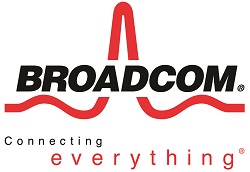Broadcom, MediaTek and Intel were among the companies revealing new chipsets for Wi-Fi and 5G connectivity at CES.
Broadcom has expanded its range of 5G Wi-Fi chips and SoCs for retail routers, wireless gateways and set-top boxes. The manufacturer said it had released the 802.11ac products in response to the growing demand for streaming HD content.
Its 4×4 MU-MIMO BCM4266 chip uses multiple radio optimisation to enable “broadcast-quality video” over wireless networks. The 2×2 BCM53573 and BCM47189 SoCs will be targeted at mid-tier and entry level routers, repeaters, power line and MOCA Wi-Fi bridges. Broadcom claimed the SoCs were the first to bring 2×2 802.11ac radio onto a single chip along with a CPU and ethernet switch.
Manny Patel, Broadcom Director, Wireless Connectivity, said: “The new 4×4 5G WiFi MU-MIMO architecture enables our customers to design faster, higher capacity, longer range access points that are equipped to address the growing number of connected devices in the home and continued demand for high quality wireless video streaming.”
Meanwhile, MediaTek revealed its MT7615 at the trade fair, claiming it was the most advanced 802.11ac SoC for Wi-Fi connectivity.
The SoC uses integrated front end modules to deliver HD/4K video and data in homes and offices. The SoC can support up to four users simultaneously, by using beamforming and advanced MU-MIMO support.
The device will be made available to manufacturers during the second quarter of this year, with mass production starting by September.
Finally, Intel began shipping its new 14nm Atom processor for tablets, which offers carrier aggregation and supports Category 6 speeds. The so-called Cherry Trail will enable tablets to wirelessly display content to a bigger screen or projector.
Users will also be able to log into devices by using their face, fingerprint or trusted device. Context aware technology will deliver specific information according to a user’s location.
Read more:
Nvidia unveails Tegra X1 “superchip” aimed at machine learning, autonomous technology



